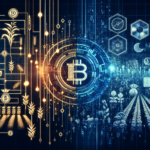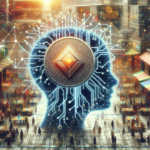Understanding Quantum Key Distribution
What is Quantum Key Distribution?
Quantum Key Distribution, often referred to as QKD, is a method used to securely distribute cryptographic keys through the principles of quantum mechanics. Unlike traditional methods that rely on mathematical algorithms for security, QKD takes advantage of the unpredictable nature of quantum particles.
At its core, QKD allows two parties—let’s call them Alice and Bob—to generate a shared secret key that can be used for encryption and decryption of messages. The beauty of QKD lies in its ability to detect eavesdropping, thanks to the principles of superposition and entanglement.
Why is Quantum Key Distribution Important?
In our increasingly digital world, secure communication is more critical than ever. Traditional cryptographic methods, such as RSA and AES, are based on computational complexity. Shor’s algorithm, a quantum algorithm, poses a significant risk to these traditional systems, as it can factor large numbers efficiently with the help of quantum computers. QKD, however, is resistant to such attacks due to its foundational basis in quantum physics.
The Principles Behind QKD
Quantum Mechanics Basics
To understand QKD, it’s essential to grasp a few fundamental concepts of quantum mechanics.
Superposition
Particles at the quantum level can exist in multiple states simultaneously until they are measured. For example, a photon can be in a state representing both 0 and 1 until a measurement is made, at which point it collapses into one of the two states.
Entanglement
Entangled particles are intertwined in such a manner that the state of one particle instantaneously affects the state of the other, regardless of the distance separating them. This spooky action at a distance, which Einstein famously commented on, plays a critical role in ensuring security in key distribution.
The QKD Process
QKD typically follows a straightforward sequence that ensures both parties can generate a secure key.
Initialization
Alice and Bob begin by establishing a quantum channel, usually through optical fiber or free space. They also set up a classical channel for non-quantum communications.
Key Generation
Alice sends photons to Bob, using various quantum states to represent bits of information. These can be polarization states of photons, for example. Bob measures these photons, creating a raw key made of bits.
Basis Reconciliation
To ensure that they both interpret the transmitted photons correctly, Alice and Bob discuss their measurement bases over the classical channel. This process involves revealing which states were used and comparing their results to identify which bits match.
Privacy Amplification and Error Correction
After comparing measurements, they must address any potential eavesdropping and errors. If an eavesdropper, say Eve, intercepts the communication, she may inadvertently alter the state of the photons due to the quantum principle of measurement disturbance. This is where privacy amplification comes in, as they apply algorithms to create a final key that’s secure.
Types of Quantum Key Distribution Protocols
BB84 Protocol
The BB84 protocol, developed by Charles Bennett and Gilles Brassard in 1984, is the first and one of the most well-known QKD protocols. It uses two bases for the polarization of photons to ensure security. When Alice sends her photons and Bob measures them, they use different bases, allowing them to identify discrepancies and detect eavesdropping effectively.
E91 Protocol
Developed by Artur Ekert in 1991, the E91 protocol is based on quantum entanglement. In this method, pairs of entangled photons are sent to Alice and Bob. Because of their entanglement, the measurements made by one party will correlate with measurements made by the other, allowing for secure key generation.
Security Features of the E91 Protocol
The E91 protocol allows for the detection of eavesdropping through the violation of Bell’s theorem. If Alice and Bob find that their measurements violate the acceptable Bell inequality, they can be confident that their communication is secure.
Challenges and Limitations of Quantum Key Distribution
Distance Limitations
One of the primary limitations of current QKD technologies is the distance over which secure communication can be maintained. Quantum signals tend to degrade over long distances due to scattering and absorption in optical fibers.
Solutions Being Explored
To counter these limitations, researchers are exploring various solutions, such as using quantum repeaters. These devices can extend the range of QKD by redistributing quantum states between sections of the fiber.
Integration with Existing Systems
Implementing QKD within existing infrastructure may seem daunting. Legacy systems need compatibility with quantum key distribution methods to facilitate a smooth transition.
Technological and Economic Barriers
While the potential of QKD is immense, the technology is still in its infancy. High costs associated with quantum equipment and deployment challenges create barriers to widespread adoption.
Future of Quantum Key Distribution
Commercial Applications
Several entities, including governments and major corporations, are keen to explore the commercial applications of QKD. Secure communication networks using QKD are being piloted in various sectors, from banking to health care.
Advancements in Quantum Technology
As research continues in quantum computing and quantum communication, we can expect more sophisticated forms of QKD to emerge, overcoming current limitations and enhancing security protocols even further.
International Collaboration
Global collaboration is crucial in developing standardized protocols and ensuring robust QKD networks, as cyber threats know no boundaries.
The Role of Regulation
As QKD technology matures, regulatory frameworks will be necessary to establish guidelines for secure communications and protect against malicious actors.
More than just a cutting-edge technology, QKD represents a step toward the future of secure communication in our digital world. As we unravel its mysteries, the prospects for enhanced cybersecurity look promising.








